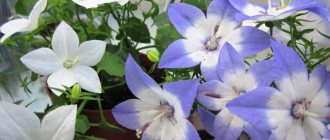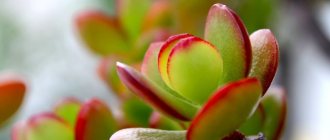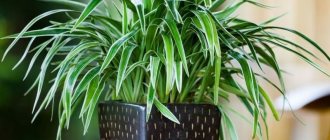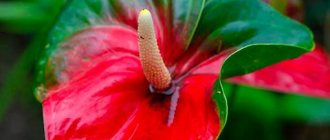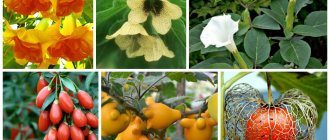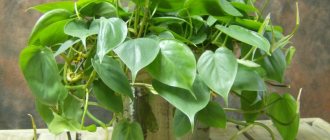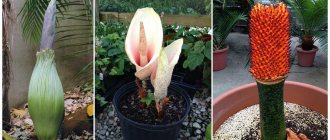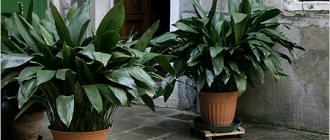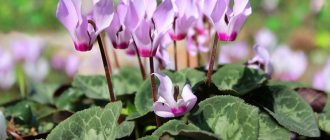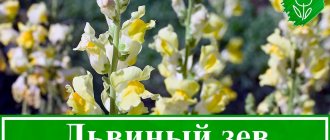Monilaria - belongs to the Aizoaceae family. The name translates as “Pearl Necklace”. The succulent is native to South Africa. The distribution area of this plant is very small - it is mainly found in the Carragh region. It is used quite rarely in indoor floriculture, although the plant is very original. This succulent has a peculiar feature - the drying leaves create a cover to retain moisture during the dry period.
Each season, the plant produces its first pair of leaves from the trunks, more like stumps or bunny ears. Then, from the first pair of small leaves 1 cm in size, a second one appears. This pair is up to 10 cm long, round-cylindrical in shape and has a very beautiful pearl color. The skin of the plants is covered with tiny bubbles filled with juice, which gives the pearl effect.
But by spring, a dry crust remains from the leaves adjacent to the stem. After some time, everything will repeat itself, and new leaves will grow. Blooms from May to August. The flowers resemble coltsfoot inflorescences and come in white, pink and red.
The easiest way to buy Monilaria seeds is in the online store. The price for one bag, which contains only three seeds, ranges from 40 rubles and above, depending on the variety.
Hemanthus in nature
The hare's ear flower is a heat-loving plant. In the wild, it grows in tropical Africa in the Cape Province. Here on the mountain slopes in the shade of spreading bushes this plant feels simply excellent. The name “hemanthus” was coined for it by Carl Linnaeus in 1753. It is translated as “bloody.” Indeed, plants with bright red flowers are mostly common in nature. However, over the centuries, other varieties have been developed that have flowers of a different shade. These include Hemanthus white-flowered. It is also quite a showy plant. Its inflorescence is large in size and looks fluffy due to the large number of stamens. Hence another name for hemanthus – “hare’s tail”.
Popular species of the genus Monilaria
You can find several types of “Hare Ears” on sale. Let's describe them in more detail.
Monilaria moniliformis
On the Internet you can find this succulent called Monilaria monilaria or M. necklace . The flower is a small, weakly branched, cushion-shaped succulent shrub up to 15 cm high, whose winter leaves disappear in summer, leaving branches in the form of short internodes.
Each internode is covered with a strong barrel- or box-shaped sclerotic sheath and is connected briefly, like a necklace of beads. The soft cylindrical leaves are short-lived and wilt in summer. Single, apical flower (40 mm in diameter) white with a long peduncle.
Monilaria pisiformis
This species is a small, clump-shaped plant with thick stems connected briefly, like a necklace of beads. This succulent is surprising in that each year one small bead-shaped leaf subsequently develops into a “bead-shaped” stem segment. By the number of these segments, you can easily guess how old the plant may be.
The leaf shape is cupped and smaller than other species. The flower is solitary, 25-35 mm in diameter, on a long stalk. The petals are yellow with a white edge (also available in white, orange, red or purple), fading to white, and pinkish-reddish at the base. This species is smaller than other relatives of the genus.
general description
The leaves of hemanthus have a rich dark green hue. The plates themselves are quite wide and thick. They grow vertically upward in pairs, and their tips hang down on both sides, which gives them the appearance of bunny ears. Usually up to 4-6 leaves grow in one pot. In an adult hemanthus, their length can reach 30 cm. The height of the peduncle is 20-60 cm.
The hare's ear flower is a bulbous plant, and therefore does not like stagnant water. It needs good drainage in the pot. The bulb of this indoor flower is very large - up to 12 cm.
In winter, hemanthus begins a period of rest. This plant reproduces by seeds, daughter bulbs and leaves. Its main features also include the very slow growth of leaves. Also, apartment owners who want to purchase this plant should be aware that it can cause allergic reactions.
Kinds
Monilaria moniliformis
A small shrub consisting of granule-like shoots. There are two types of leaves - small, almost fused and long, which break the primary leaves at the beginning of the wet period. Blooms with white or yellow flowers. The flowers have a weak aroma. They grow on separate peduncles. When the leaves dry, they form a parchment-like skin that protects the plants from dehydration.
Monilaria monilareformes
Monilaria obconica Maerpoort
The succulent, which forms a tussock with a diameter of 30 cm, has short stems with a bead-like structure. The leaves are bright green, with a characteristic pearl tint. This species most closely resembles lithops - “Living Stones”. It blooms with small white or pink flowers. During the dormant period, only stumps are visible, looking like dried roots.
Also read: Indoor Yucca palm tree: all about plant care
Monilaria obconical
Monilaria scutata
A hummock-shaped succulent with thick roots that connect to each other like a necklace. The leaves are paired of two types: the first is rounded, the second is more ordinary, elongated. The second pair of leaves diverges in a V-shape. Young leaves have a reddish tint, mature leaves are green, the skin is lumpy, characteristic of all Monilaria. It blooms with single, medium-sized 2.5-3.5 cm in diameter with 5 unequal, tuberculate sepals. The color is varied: from white with a yellow border to purple.
Monilaria scutea
Monilaria pisiformis
It is distinguished by taller knotty stems. Otherwise it has all the usual signs of Monilaria. Blooms from May to August for 2-3 weeks. The second pair of leaves are scissor-shaped, semicircular on one side, and have a pearly tint.
Monilaria pistillate
Planting hemanthus
The pot for the hare's ears flower (the photo on the page clearly demonstrates its beauty) is shallow, but at the same time quite wide. There should be approximately 5 cm of free space from the edges of the bulb to its walls. Land for hemanthus can be bought in the store. A universal soil option is perfect for this indoor flower. But if you wish, you can prepare the soil yourself. Its composition should be like this:
- leaf soil - 1 part,
- turf – 2 parts,
- sand - 1 part,
- peat – 1 part,
- humus - 1 part.
When planting hemanthus, you need to follow one important rule - the bulb should not be completely buried in the ground. At the end of the procedure, the flower is watered.
Growing chistets
When growing rabbit ears, sunny areas are chosen for planting them. However, the plant will also be quite comfortable in partial shade. Chistets prefers light, loose soils with good drainage, alkaline or neutral, with a low nitrogen content. But it will feel good in other types of soil. Sheep ears take root and grow well in almost any place and with any care, it’s not for nothing that one of the names of the plant is tenacious.
The ears almost do not need fertilizing, but in early spring it is advisable to apply organic fertilizer, such as rotted compost, under the bush - this will help it grow more powerfully.
Rabbit ears should be watered sparingly. They tolerate drought easily, but overwatering can cause root rot, which is detrimental to the plant.
In addition, excessive watering spoils the decorative appearance of the chickweed - its fibers begin to stick together, exposing the green surface of the leaves. But this grass is practically not susceptible to diseases and pest attacks.
To maintain the spectacular shape of the plant, you need to promptly remove dried and browned parts. If the chickweed is used as a low-growing species, then in the summer it is necessary to cut off the inflorescences so that the plant does not bloom. However, if the composition allows for the appearance of tall shoots, then flowering ears can become a spectacular addition. But it is worth remembering that it is better to remove ripe inflorescences, otherwise the bush will disintegrate.
There is no need to cover the chistet for the winter; it is not afraid of frost and can withstand temperatures down to -35 C. However, at very low temperatures it can be covered, but not too much - otherwise the chiste may ripen under the cover.
Hare's ears reproduce by almost all methods of reproduction:
- seeds;
- stem cuttings;
- dividing a bush or rhizome.
Seeds can be sown in a permanent place in spring or autumn, or they can be sown in containers in March, and when two leaves appear, the seedlings can be planted in a permanent place.
When propagated by cuttings, the lower parts of the stem are used. You can divide and replant the chistae both in spring and autumn, and even in summer in cool weather. The plant can be replanted at any time if a bald spot has formed between the bushes.
Many indoor flowers are called “rabbit ears”. Typically these plants have two drooping, pointed leaves. However, most often this popular name goes to hemanthus white-flowered - a plant that can become a simply wonderful decoration for any room and at the same time is distinguished by its unpretentiousness.
Propagation by leaves
To propagate a plant such as the hare's ear flower, the easiest way is to use this method. The leaf is simply cut with a sharp knife and stuck into wet sand. Before doing this, it is advisable to sprinkle the tip with charcoal powder. The leaf takes root very quickly. Soon young plants appear on it. They bloom in the third year. Hemanthus is replanted once every 2-3 years as the bulb grows. If this is not done, the plant may stop blooming. The transplant should be performed as carefully as possible. It is extremely undesirable to damage the roots of this plant. Otherwise it will start to hurt.
How to knit bunny ears
Rabbit ears can be knitted either with one end of the rope or with a loop in the middle of the rope. The second method is mainly used, since it requires a minimum amount of time to implement.
In order to quickly knit bunny ears, you need to go through the following scheme step by step:
- Fold the rope in half to make a loop.
- Turn the loop clockwise and place it on top of the double rope.
- Insert your hand into the resulting ring and pull out the part of the loop located between the crosshairs of the two double ropes and the end of the loop.
- Throw the end of the loop onto the loops extended from the ring, then pull them to form a “bunny ears” knot.
The video below shows the sequence of knitting a bergwacht with a control knot:
I have seen another way of knitting this knot, where the basis was not a simple knot, but a figure eight.
It is necessary to ensure that there are no overlaps in the tourist knot, as this further reduces the strength of the rope.
Care
Hare's ears are an indoor flower that is unpretentious. You can fertilize it from time to time with complex fertilizer for indoor flowers. But the plant will develop quite well without performing this procedure. Organic fertilizers are contraindicated for hemanthus.
Water the hare's ear flower sparingly. If water stagnates, the bulb may dry out. However, it is not advisable to allow the soil in the pot to dry out.
Trim the hare's ear flower, the care of which is extremely simple, removing dried leaves as necessary. The peduncle must also be removed after the ovary has formed. Over time, it will die off on its own, but is capable of spoiling the appearance of the hemanthus for a long time. This plant also does not require spraying. The usual 60% humidity for city apartments is quite enough for him. The only thing is that it is necessary to provide the plant with abundant diffused sunlight. It is best to place the flower on the window on the west side of the apartment. On warm days, it is advisable to take the plant out onto the balcony or into the garden. In this case, it must be placed in partial shade. Hemanthus should not be left in the sun. Otherwise, burns will appear on its leaves.
For the winter, the hare's ear flower, a photo of which you can see on the page, should be placed in a room with an air temperature of about 15 degrees. However, this plant tolerates a dormant period well even if it is simply shaded. Watering in cold weather is reduced. The lump should remain almost dry.
Woolly chistets: growing from seeds
This flower is mainly grown from seeds.
The best time to sow seeds for seedlings is March. In less than 3 weeks the first shoots will appear. A young plant is slightly different from an adult. Its leaves are not at all fuzzy, which is why at first many gardeners may think that they have mixed up the seeds. Around the end of May, when the seedlings of the crop have grown and become stronger, they can already be planted in open ground. We should not forget that the soil lump on the flower should under no circumstances be destroyed.
The chist exhibits all its amazingness and charm in an open and abundantly sunlit area. After some time, the leaves of the crop begin to gradually become pubescent, acquiring their natural appearance and silver color. By the end of the summer period, you can already see a real living carpet in the garden, which will not lose its beauty even in winter. The plant can withstand frost remarkably well and looks very unusual against the background of snow.
Those who want to grow something original and very unusual in their garden can safely plant a magnificent flower - the woolly chickweed. Planting and caring for such a marvelous crop will not be difficult, but will bring great pleasure to gardeners.
Chistets is a decorative perennial
with leaves that look like furry ears. Because of these cute leaves, the plant has received many names - rabbit ears, sheep ears, lamb ears, donkey ears and even bear ears...
The leaf, indeed, is very reminiscent of the soft and gentle ear of an animal. There are other names for this plant - stachys
,tenacious
,
grate
,
blackberry
...
Chistets are loved for their original appearance, beautiful flowering with a delicate aroma and ease of cultivation. It remains decorative until late autumn, so this plant can often be found in gardens, parks, lawns, etc.
It can decorate flower beds and is perfect for mixed borders, rockeries and alpine slides.
Diseases
Hare's ears are a fairly hardy flower and are rarely attacked by insects. Sometimes he is attacked by spider mites. In this case, the plant should be sprayed with wormwood infusion and watered with Aktara solution. Sometimes the plant's bulb rots. A similar problem can arise, as already mentioned, as a result of excessive watering and stagnation of water in the pot.
As you can see, bunny ears are an extremely unpretentious flower. All that is needed to achieve spectacular flowering is to water it from time to time and fertilize it occasionally. It can be a very good decoration for an apartment. Hemanthus is especially beautiful in summer, during flowering, which lasts about a month.
Medicinal properties
Chistets woolly is a medicinal plant that our ancestors took. Flowers, leaves, roots, and stems were used to make medicine. But now stakhis is also used. Let's look at its medicinal properties:
But the plant also has contraindications for use:
- Pregnant and lactating women should not take it.
- Chistets is contraindicated for children.
- Not suitable for people prone to allergies.
How to prepare the medicine correctly?
Infusion of woolly chistets
Grind the dried leaves, flowers and stems of the plant. Pour one tablespoon of this mixture into a glass of boiling water. Let the product brew for two hours, after which it must be strained. This infusion helps with uterine bleeding and high blood pressure. You should take one tablespoon twice a day.
Root tincture
Pour a tablespoon of roots with 300 milligrams of boiling water. The roots must be chopped before doing this. The solution should be boiled for about four minutes. After this, the infusion should be left alone for two hours to allow it to infuse. It must be strained before use. This remedy is excellent for intestinal colic, stomach pain and gastritis. You should take the product three times a day, half a glass after meals.
Woolly Chist plant
Home → GARDEN PLANTS → Hare's ears, Chistets Byzantine or Stachys woolly? There are woolly chickweed and swamp chickweed. A very interesting unusual plant. The herb of the plant contains coumarins, astringents, pectins, essential oils, flavonoids, organic acids, sugars, vitamin C, and carotenoids.
This is the same flower. And hare ears and bear and sheep ears. Used mainly as a decorative foliage border plant. The silver color goes well with green plants and bright flowers. This unusual flower is also used for rock gardens and rockeries. Stachys Woolly is a winter-hardy plant that does not require additional shelter.
I first became acquainted with this plant in childhood. Of interest for traditional medicine are the leaves, flowers, stems, and roots of the woolly chickweed, which contain vitamin C, tannins, flavonoids, and an alkaloid. Chistets roots have an antispasmodic effect, and a decoction of them is effective for colic. The use of medicinal plants in therapy is more relevant today than ever.
Personal opinion
Despite the popularity of the double guide, I prefer to tie other knots, such as the double bowline. And although it takes a little more time to knit a double bowline, nevertheless, if the rope was under load, it will be much easier to untie a double bowline than a double conductor. It turns out that when knitting, the double conductor wins in time, and when untied, it loses in time and effort expended to the double bowline - 1:2 in favor of the double bowline.
In conclusion, I would like to note once again that hare ears are a good reliable knot that does not weaken the rope too much. It is not difficult to tie, which is why it is still very popular among tourists to this day.
Due to its simplicity and reliability, this unit can be recommended for study for all lovers of outdoor activities.
Find out also:
- How to tie a bowline knot
- Prusik knot and rules for knitting it
Stachys: combination with other plants
Delicate and fluffy sheep's ears look excellent in many landscape compositions in the garden. They are used in decorating flower beds, paths, borders, etc. Chistets will emphasize and highlight bright flowers:,
| Species affiliation | Lamiaceae |
| Plant type | Perennials; Ground cover; |
| Group | Rhizome herbaceous |
| Reproduction methods | Mainly vegetative (by dividing the bush), possibly seed |
| Landing time | May or September |
| Planting scheme | 30 x 30 cm |
| Soil requirements | Loose, water-permeable. Able to grow in poor soils; does not tolerate heavy damp soil |
| Lighting requirements | Sun or light partial shade; when planting in the shade, loss of decorative effect is possible |
| Humidity Requirements | Moderate watering; rots when water stagnates |
| Care requirements | Periodically dividing the bush to avoid its exposure. Trimming flower stalks: after withering or as they appear, if grown as an ornamental foliage plant. |
| Plant height | From 10 to 30 cm |
| Color spectrum | White and silver; |
| Type of flowers, inflorescences | Very small flowers form spike-shaped inflorescences on tall peduncles |
| Flowering period | From July to September |
| Seasonal decoration | Summer; |
| Usage | Borders and ridges; Mixborder; |
| USDA zone | 3; 4; 5; 6; |
Chistets
) is a perennial herbaceous plant belonging to the Lamiaceae family.
An extensive genus that includes more than 300 species of various plants, including many common wild herbs. Some of them (such as Stachys officinalis
,
Stachys sylvatica
, and
Stachys palustris
) have medicinal properties.
Chistets Byzantine is widespread in garden culture.
, also known as
woolly stachys
(
Stachys byzantiana
(
Stachys lanata
)). It is especially valued for its silvery, densely pubescent, wide oval leaves that are very pleasant to the touch. The shoots of Chistets Byzantine are creeping, the peduncles rise up to 30 cm. Depending on the composition of the flower garden, the peduncles are left until the end of flowering or removed - if the Chistets is grown as an ornamental deciduous border plant. Often during the flowering period the bush becomes loose, its middle becomes bare; Removing flower stalks stimulates the growth of new shoots, and a dense silver cover is formed.
Chistets Byzantine is a fast-growing plant that remains decorative until late autumn. It is not demanding on conditions and care, takes root well in poor soil, and is drought-resistant, which is why it is often used for planting in rockeries. The plant is winter-hardy, but in regions with harsh climates it may require light shelter for the winter.
An ideal plant for borders and flower beds. It forms a thick, even and dense border, and the silver-gray color of the foliage contrasts well with the green of the leaves and the bright colors of the flowers. A very wide range of different combinations allows you to achieve a variety of effects in flower beds.
Just a few decades ago, it was impossible to find woolly stachys on the plots of local summer residents. And this is not surprising, because it was brought from its historical homeland - China only at the end of the 20th century. Very quickly the plant gained incredible popularity. Once you see a chist, you can hardly resist the desire to plant it in your flower garden. But before we start growing this ornamental plant in open ground, let's figure out how planting occurs, what care is involved, whether it needs watering and which varieties of Stachys woolly are preferable for our area.
Features of Arabis
Arabis is cultivated as an annual or perennial. It is used as a ground cover plant, as it has creeping, rooting shoots. The height of the bush does not exceed 0.3 meters. The surface of the green leaf blades has dense pubescence, their shape is heart-shaped, they are entire, sometimes with a jagged edge. Not very large dense racemose inflorescences consist of double or simple flowers, reaching 15 mm in diameter; they can be painted white, light yellow, pink or purple. The abundant flowering of the plant is relatively long-lasting, and it begins approximately in the middle of the spring period. The inflorescences give off a very pleasant smell, which attracts a large number of bees to the garden. The fruit is a pod containing flat-shaped seeds inside. There are species that have winged seeds. This plant is related to horseradish, cabbage, iberis, alyssum, rapeseed, mustard, radish and other representatives of the cruciferous family. It not only has a pungent odor, but is also unpretentious to growing conditions.
Advantages and disadvantages
Like any other node, a double conductor has its advantages and disadvantages.
Among the advantages are the following:
- easy to remember;
- knits quickly;
- reliable and does not creep;
- the size of the loops can be made different and changed even after the knot is tightened;
- Compared to a double bowline and a double top knot, when one loop is loaded, the second loop in the “bunny ears” creeps less.
A little about comparing bunny ears with a figure eight - in the video:
The main disadvantage of this knot is that when loaded it becomes very tight and after that it may be difficult to untie it. Nevertheless, this junction continues to be very popular among tourists, and even professional speleologists and climbers have not abandoned the double guide to this day.
